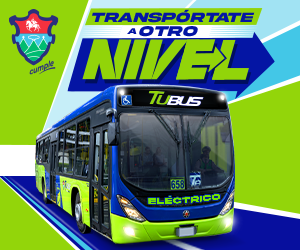The Secretary-General of the Central American Integration System (SG-SICA), Vinicio Cerezo, made a call in the 4th Edition of the regional dialogue “Summit of Social and Sustainable Tourism“, to reinvent the Central American tourism sector and that development models evolve towards sustainability in the long term, this through strategic alliances, cooperation and a common agenda as a region.
The richness of biodiversity in flora and fauna is unique in Central America, a tourist potential that has become the main source of income for the countries and one of the sectors that drive economic development; that only in 2018 generated 1.3 million jobs in the region with a growth percentage of 10%.
Faced with the economic and social crisis, generated by the COVID-19 Pandemic, the tourism sector is one of the hardest hit in Central America, accounting for less than 35% of tourist arrivals.
Analyzing the challenges of this sector in the post-COVID-19 stage, the aim is towards solutions for sustainable and social tourism and blue growth, as well as generating a space for information, exchange of ideas, and proposals to redesign this area.
This was the objective for the 4th Edition of the Social and Sustainable Tourism Summit, which took place on September 8th and 9th, organized by the Secretariat of Environment and Natural Resources of Mexico (SEMARNAT), and where regional instances of SICA related to tourism were invited.
The President of the Organizing Committee for the Sustainable and Social Tourism Summit, Vicente Ferreyra Acosta, said that the Pandemic has underlined the importance of cooperation between countries to make sustainability processes a reality.
In this context, the Secretary-General of SICA, Vinicio Cerezo, during his participation in the space “Intersectoral Dialogue on the environment, tourism and fishing within the framework of SICA”, assured that within the framework of the System and under an intersectoral process, the tourism, environment, and fishing sectors are working in an articulated way for the development of the region and towards a blue economy.
“We have the opportunity to rethink tourism under a new reality, harmonizing intersectoral actions and efforts so that at the same time we can comply with the commitments made with the SDGs and the 2030 Agenda,” said Cerezo.
He stressed that the long-term development vision of the region is based on balancing economic growth, social welfare, and environmental sustainability; a bet that is already being worked on in the System and that gained more strength with the design and implementation of the Regional Contingency Plan against Coronavirus.
This plan has been the starting point for the construction of other efforts with different sectors, where it arose from an Economic, Social and Environmental Recovery Plan for the region, which will also allow putting the recovery of the most vulnerable populations at the center, as, indigenous peoples, Afro-descendant artists, women, and youth.
This virtual meeting, added Cerezo, comes to strengthen the work that is already being developed to generate economic, social, and environmental sustainability in the economic activities of the coastal-marine areas, thanks to the joint efforts of the Council of Ministers from the Commission Centroamericana de Ambiente y Desarrollo (CCAD), the Organization of the Fisheries and Aquaculture Sector of the Central American Isthmus (OSPESCA), and the Secretariat for Central American Tourism Integration (SITCA), among other regional organizations, to build an environmentally sustainable and resilient Central America.
A common and articulated agenda is proposed
The region represents around 10% of the world’s biodiversity, more than 554 protected areas, which occupy 25% of the regional territory; it also has the 2nd largest coral reef in the world oceans, colonial cities, volcanoes, living cultures, diverse gastronomies, beaches in the Pacific and the Caribbean, resources that make it a unique place.
In the regional dialogue, the importance of the sector was highlighted and the need to strengthen and consolidate cooperation, alliances, and solidarity among countries not only in the region but also at the international level, to give a regional and multisectoral approach to the common challenges and problems.
The Minister of Tourism of the Republic of Nicaragua, and in her capacity as Director of SITCA, Anasha Campbell Lewis and the Minister of the Environment and Natural Resources of Nicaragua, Fanny Sumaya Castillo as Pro Tempore Presidency of CCAD, highlighted the potential of the SICA member countries and their offer for social and sustainable tourism, as well as the importance of the work agenda under the regional umbrella of SICA, that has allowed progress on the issue of sustainability in the environment, tourism, and fishing.
The Executive Secretary of CCAD, Salvador Nieto, indicated that they will continue to strengthen the articulated work. “We want to support these types of situations from the Regional Environmental Strategy for Central America Framework which we are updating,” he concluded.
They also said that within the framework of SICA, coordination has been strengthened to promote cooperation, planning, and implementation of joint actions in matters of natural resources and the environment, related to marine-coastal resources, the integral management of water resources, the economy circular, and comprehensive waste management, as well as the promotion of alliances with other partners.






































